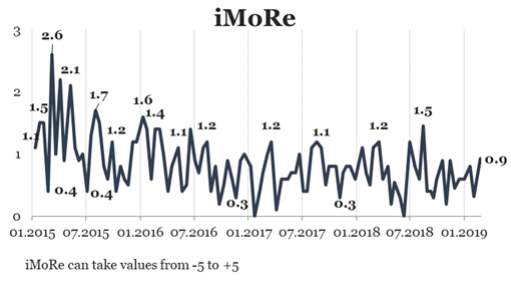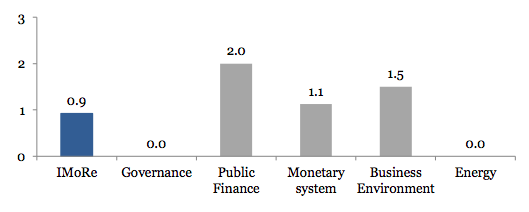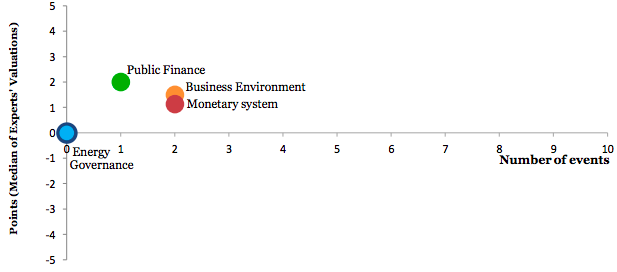Reform Index is +0,9 points for the period from January 28 – February 10 2019 on a scale of -5,0 to +5,0. In the previous round the index was +0,3 points.
The major events of this round – the resolution on monetization of housing subsidies.
Chart 1. Reform Index dynamics

Chart 2. Reform Index and its components in the current round

Event of the round
Monetization of housing subsidies, +2,0 points
To compensate the rise in gas prices in 2015, the government has introduced a large-scale housing and communal subsidy program. Over 3 years, the amount of subsidies recipients has increased by 6 times. As of December 2017, almost half of the families (46.2%) was receiving subsidies for housing and communal services from the state. The system had significant gaps because often families received subsidies, which actually they did not need. Also, the system did not motivate recipients of subsidies to consume less energy.
During 2018, the government has taken a series of steps (1, 2) to distribute targeted subsidies to those who really need them. As a result, the number of recipients of subsidies has decreased by almost half (26% of households as of December 2018).
The next step is monetization of subsidies. The government has done it recently. By a resolution dated February 6, 2019, No. 62, the government determined who and how will receive cash assistance from the state for the payment of housing and communal services.
It is expected that 4 million households will receive a monetized subsidy, 70% of which are retired people. Pensioners will receive the subsidy with a pension. Employees of the budget sphere serviced by “Sberbank” will be able to receive it on their cards. Other citizens will be able to receive a subsidy in any branch of “Sberbank”. They will receive a letter by mail.
Chart 3. Value of Reform Index components and number of events

(Please see other charts on the website)
Reform Index aims to provide a comprehensive assessment of reform efforts by Ukraine’s authorities. The Index is based on expert assessments of changes in the regulatory environment in five areas:
- Governance
- Public Finance
- Monetary system
- Business Environment
- Energy
For details please visit reforms.voxukraine.org
Attention
The author doesn`t work for, consult to, own shares in or receive funding from any company or organization that would benefit from this article, and have no relevant affiliations



